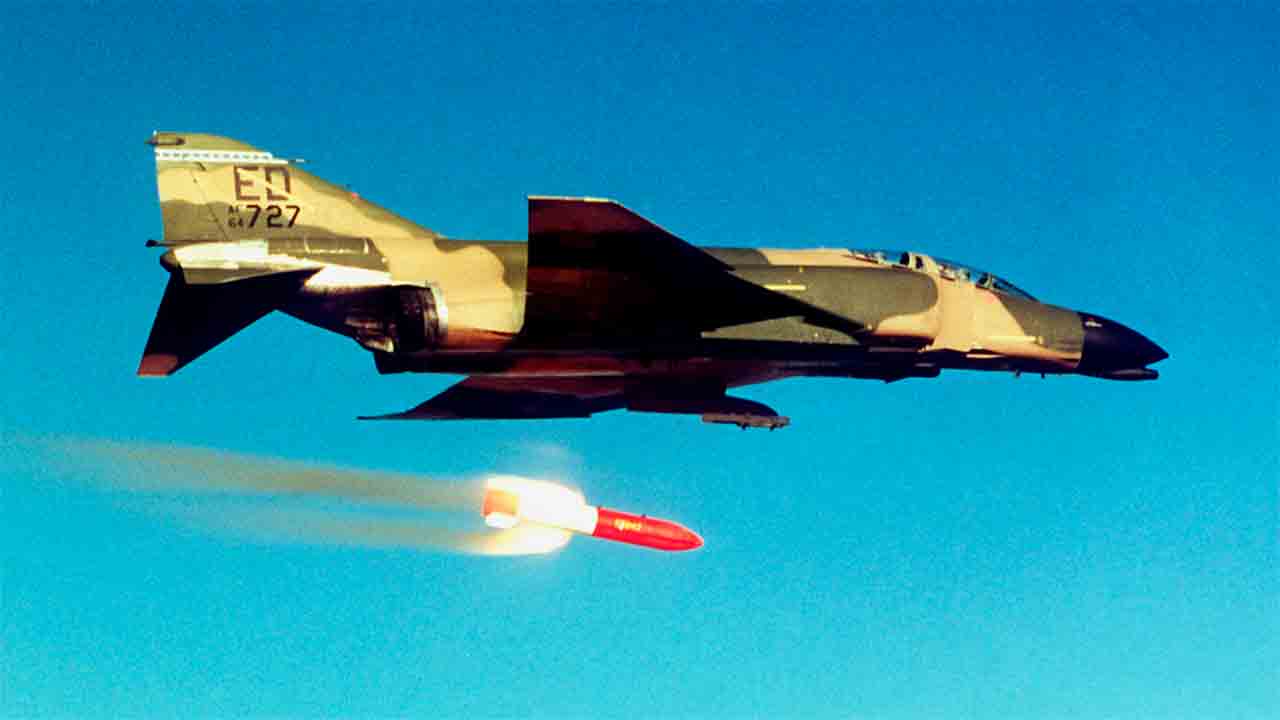

The United States maintains one of the most sophisticated and varied nuclear arsenals in the world, with weapons designed for different strategic scenarios. Among these are the B61-12, recently modernized, and the imposing B83, considered the most powerful still in operation.
+ The United States Completes Modernization of the B61-12 Nuclear Bomb
With capacities ranging from 0.3 to 1,200 kilotons, these bombs represent both a technological advancement and a historical milestone, especially when compared to the bombs dropped on Hiroshima and Nagasaki during World War II. For perspective, the Hiroshima bomb had a yield of 15 kilotons, while the B83 can be up to 80 times more powerful.
Below is a ranking of the main American nuclear bombs, organized by their power in kilotons (kt), from the smallest to the largest.
B61 (20-50 kt)


Description: The B61 bomb is one of the most versatile in the American arsenal, with adjustable power (20 to 50 kilotons), allowing it to adapt to different types of missions, including tactical and strategic use.
+ Babcock Acquires 11 L-39 Albatros Aircraft for Fighter Pilot Training
W80-1 (5-150 kt)
Description: Used in cruise missiles launched from submarines and bombers, the W80-1 has a variable power that can be adjusted between 5 and 150 kt.
B83 (1.2 megatons, equivalent to 1,200 kt)
Description: The B83 is the most powerful nuclear bomb currently in operation in the United States. Its maximum power of 1,200 kt makes it capable of devastating entire areas.
General Comparison with Hiroshima and Nagasaki
Hiroshima (“Little Boy”): 15 kt – The explosion destroyed almost the entire city and caused the deaths of approximately 140,000 people.
Nagasaki (“Fat Man”): 20 kt – A similar impact to Hiroshima, with a smaller area of destruction due to the mountainous terrain.
Castle Bravo, The Largest Nuclear Bomb Ever Launched by the United States
The largest nuclear bomb ever launched by the United States was Castle Bravo, tested on March 1, 1954, at Bikini Atoll, with a yield of 15 megatons, about 1,000 times more powerful than the Hiroshima bomb. Originally designed for 6 megatons, the explosion exceeded expectations due to a calculation error, causing large-scale radioactive contamination and global impacts. Although it was only a test and never used in combat, Castle Bravo remains the largest nuclear explosion by the United States, serving as a milestone that influenced global efforts to limit nuclear testing.
When comparing today’s bombs with those used during World War II, significant progress is evident not only in destructive power but also in precision and flexibility. For example, the recently modernized B61-12 bomb sacrifices power for precision, with the ability to hit specific targets with minimal collateral damage.
Sources: National Nuclear Security Administration (NNSA) / Arms Control Association (ACA). This content was created with the help of AI and reviewed by the editorial team.
This post was last modified on 2025-01-13 17:18
